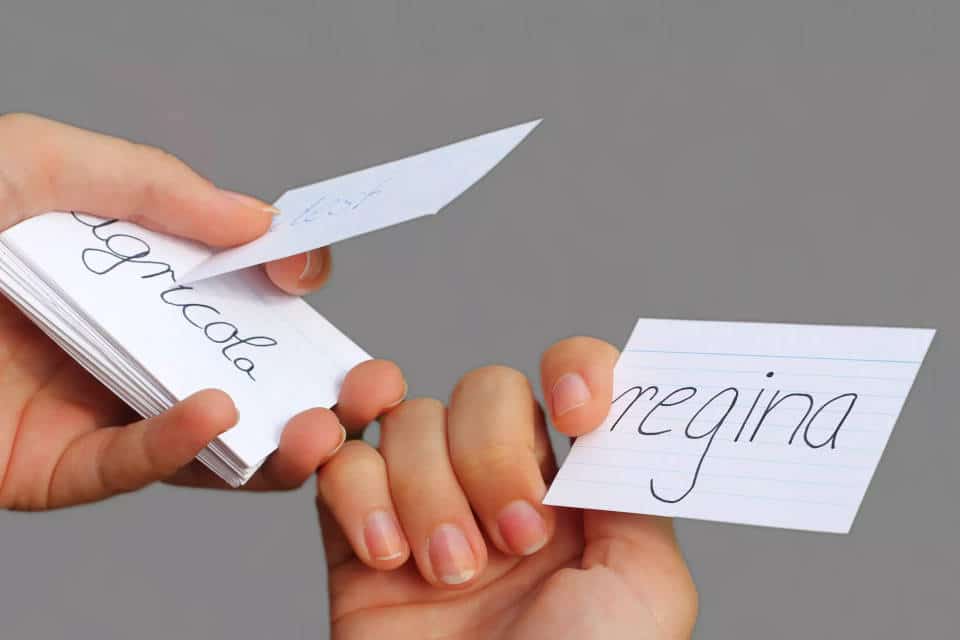
1. How Sight Words Factor into Reading
In reading, sight words are words that are recognized instantly, without the need to sound them out. These words are processed orthographically. Orthographic processing is the ability to hold a visual representation of a word for instant recognition and later, for spelling. This visual memory piece allows us to see the word and instantly recognize it. Sight words recognition must be instant, anything other than this shows that the visual representation is not solidly learned. Once a word is mapped orthographically, a child cannot suppress their ability to read that particular word.
Any word can be a sight word, whether it is phonetically regular or not. The process of reading by sight is important. In order to have fluent reading, a child cannot sound out every word. This would take up too much working memory and disrupt the ability to comprehend the text. Orthographic processing allows a reader to read more automatically, leaving just some words to be decoded with phonological processing, also known as sounding it out. However, relying on sight reading alone isn’t a good strategy either, because of the large number of unknown and visually similar words a child will encounter over time. Both phonological processing and orthographic processing are necessary to become a skilled reader.
2. When It’s Hard
Some children have difficulty with orthographic processing. Out of the children who have reading difficulties, children with orthographic difficulties make up only 10-15% of struggling readers. While some children struggle with either phonological processing or orthographic processing, it is possible for a child to have both phonological and orthographic difficulties. The children for whom this orthographic processing is difficult will require more than just practice with these words. They will need to learn how to create the visual representation in their memory.
If your child is having difficulty with learning sight words, they might benefit from explicit instruction in creating that visual representation. They will need to have daily practice with the target words, with at least five repetitions for each word during the activity. Target words should be selected from words assigned at school or from a sight word list, such as the Fry or the Dolch word lists. You should practice no more than twenty words at a time. Over time, as learned words are moved out of practice, be sure to review them occasionally.
3. The Process
This process requires some knowledge of phonics and understanding of English phonetic rules.
Select words that have a self-correction, slight hesitation or longer time span for figuring it out. Write the targeted words on index cards with thick, lowercase letters in black ink or marker.
Ask your child to analyze the word to see what doesn’t follow expected rules (if anything)
You can mark under these sounds with a heart, to demonstrate that this part of the word must be learned “by heart.” Some children find it fun to use a stamp and stamp pad or to draw this with a red or pink marker. For more difficult words, your child can create a sentence that you can say to them when they are stuck. This association will help to cue the correct word.
When you begin each session, review each word and talk about what makes that word difficult. What part needs to be remembered? What part follows the rules? Ask your child to look carefully at the word and then spell it aloud. Have them look again and then close their eyes. Ask them to visualize the word. Then you can move to games to get in the needed exposures of a word.
4. Games
Games are the best way to get in a number of repetitions with a word. There are so many games you can turn into sight word games. Remember you can create the game to work either as a reading task (they read the word) or a recognition task (they find the word you name). Also, as the other player, you can “misread” words and have them correct you, and even make it so you then lose your turn.
- Board game: Create a board game with spaces that have upside down sight words cards on them. Roll a die or spin a spinner to find out how many spaces to move. Players will flip the card on the space they arrive at, and read the word. Feel free to incorporate other game elements to add to the fun!
- Flip the burgers/pancakes, etc: Using a real spatula, ask the child to flip over each card which has been drawn or designed to look like that particular food. You can reverse this when all cards are flipped by asking them, “flip “stop” back over” and they have to find that particular word.
- For kids who love to move, incorporate movement! You can make Mother, May I? into a sight word game. Your child can take a big step for quick correct response, or a little step for slow correct response.
- You can add fine motor skills when your child practices building the words with letter beads on pipe cleaners.
- Memory: Find the matching pair from a set of face down cards, read each you flip a card over. The set can contain 16 cards in a 4×4 array. When a matching set is found, have them create a sentence with that word or spell it while looking at the card.
- Tic Tac Toe: sight word cards are face down in a 3×3 array on top of a white board or piece of paper with the Tic Tac Toe grid. You and your child must read the word correctly and automatically in order to place your x or o.
- Dominos: Make a set of dominoes with several repetitions of each word on different domino cards. Your child must read the words from the domino they are using to build.
- Go Fish: Each sight word needs a set of 4. Shuffle the deck of sight word cards, each player begins with 5 cards. Fish away!
- Bingo: Your child can be the caller or a player. The caller gets more practice with the reading portion and players get more practice with recognition of the word.
If your child is really struggling with sight words, you can look into enlisting the help of a reading specialist who can work on the visual imagery. They can guide your child with creating the orthographic mapping they need.
LightSail can help children practice their orthographic skills. LightSail provides practice for reading and spelling sight words. And LightSail has voice-to-text in the Personalized Reader for when your child is stuck on a word. The Personalized Reader makes reading a stress-free experience, as your child knows they can get help whenever they need it. LightSail’s library has books and texts for every reader.

Posted on 9.Sep.21 in Struggling Readers




